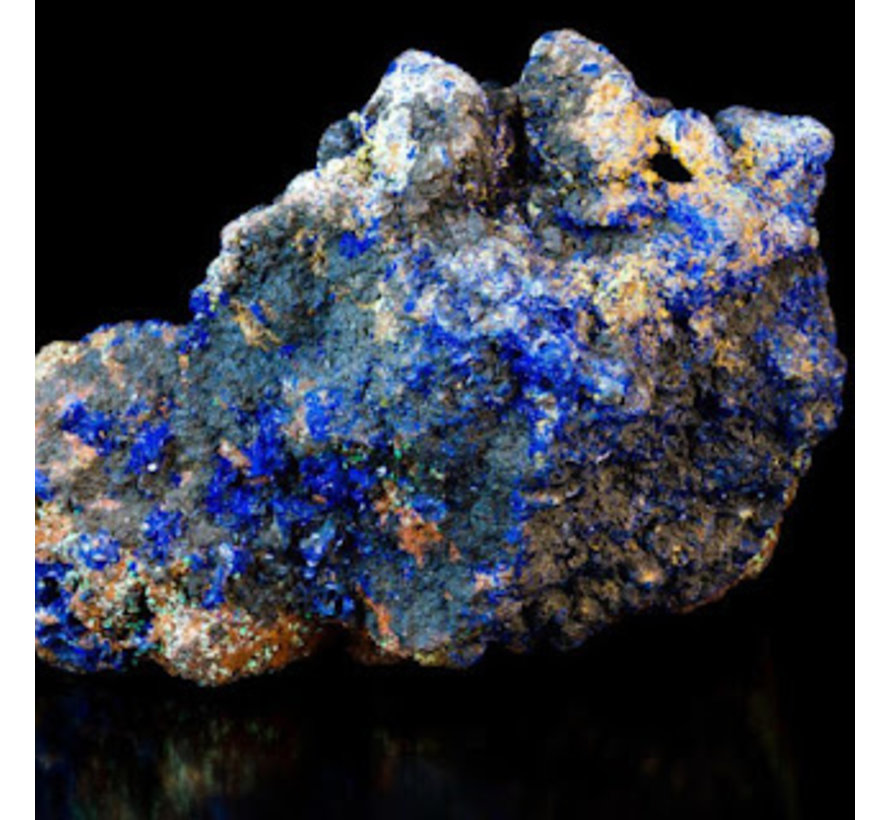Cobalt allergy
Cobalt Allergy Code C617 (Serum)
Method ELISA (EIA).
You have been diagnosed with an allergy to cobalt. Coming into contact with cobalt (chloride) can cause eczema to develop or worsen. So it is very important that you try to avoid this contact as much as possible. This information page can help you do this.
What is cobalt
Cobalt is a metal found in small quantities throughout the earth's surface. In some places the concentration is so high that it pays to extract it by mining. Cobalt is used in large quantities in the metal industry, including for hardening steel and other metal alloys.
What products does cobalt occur in?
Cobalt can be found in minimal amounts everywhere; even in our daily food and blood. These (naturally) occurring small amounts do not play a role in your allergy. In fact, our body needs a minimal amount of cobalt as part of a vitamin (vitamin B12).
Of interest are those products that contain cobalt in larger quantities. These are often metal items, which also contain nickel or chromium; e.g., metal jewelry (necklaces, earrings) and some metal tools. High-quality gold or silver jewelry usually does not release cobalt. Furthermore, cobalt is sometimes found in liquids used for electroplating, in some printing inks, in cement and is used in dyes in pottery.
Products in which cobalt may be present include:
freshly prepared wet cement;
dry cement mortar;
some printing inks;
some paints;
some animal feeds;
pigments for pottery.
In what occupations does allergy to cobalt play a role?
Cobalt allergy can be a problem especially for individuals in companies that work with cobalt or process cobalt-containing products. Examples include the ceramic industry and potteries.
Inks used in printing may contain cobalt. Sometimes cobalt is processed in the manufacture of plastic plastics or in electroplating. Other sources of cobalt include some paints, some animal feeds and cement. With cement, this is only of concern if the cement is still wet or if it dusts before being mixed with water, sand or gravel. Cured cement is not harmful. Metal and tools may contain a small amount of cobalt, but the issue here is how much cobalt "leaks out" of the metals. A large amount of cobalt that remains firmly stuck in the metal is harmless.
Occupations in which one may be exposed to cobalt include:
Ceramic industry and pottery
Feed industry
Printing
Construction industry: bricklaying, grouting, tiling
Plastic plastics industry
Electroplating industry
Manufacturing of magnetic (cassette) tapes
Grinding of special metals and precious stones
How to prevent allergic reactions
Avoiding all contact with cobalt should be the simple advice, but in practice this does not always prove possible. The issue is how much cobalt is released from the objects you come into contact with. It is also about how skin contact is with the cobalt-containing metal objects. Short-term contact with dry intact skin rarely leads to problems. Prolonged skin contact, especially when the skin is wet, quickly leads to problems.
Are there other substances I should avoid?
In principle, you can tolerate all products that do not contain cobalt. A cobalt allergy is often accompanied by an allergy to other metals, such as nickel or chromate. This may also be the case with you. Your dermatologist can inform you about this.
How do I know which products are safe?
In practice, the most important thing is to be alert to the metal objects you handle. The quality (hardness) of these objects is important here. Hard stainless steel objects, such as cutlery, are usually safe. Soft metal objects may be suspect. Before purchasing jewelry, it is wise to always ask about its composition and quality. High-quality gold or silver is usually safe.
Other useful information
People who have eczema on the hands may also have a cobalt allergy. Often this allergy to cobalt plays only a very minor role. It is quite possible that the allergy to cobalt developed only after the hand eczema was already present. Also, many people have a cobalt allergy without being bothered by it.
A metal hip prosthesis, which is inserted to replace the hip joint, or metal plates and screws, which are used to repair bone fractures, may also contain cobalt.These items never cause problems in persons who are allergic to cobalt. Amalgam fillings can be applied to you by your dentist without any problems.
Symptoms
Allergic contact eczema due to cobalt causes a red itchy skin rash in places where there was contact with objects containing cobalt. Sometimes blisters are also seen or the rash becomes wet. Often the condition flakes after some time. Characteristic red skin lesions under a (cheap) metal necklace or a wetting rash appear around the holes where earrings are applied. Contact eczema can also occur in other places. Sometimes rubbing in the eyes causes a rash on the eyelids from cobalt that was applied there through the hands.
Causes
Although rare, it is possible that your eczema is caused entirely and solely by contact with cobalt. Yet it is common for eczema to persist or improve only slightly when you carefully avoid contact with this substance. This is because eczema often has multiple causes. Most people with a cobalt allergy are also allergic to the metals nickel or chromium. Usually it is these metals, not the cobalt, that are responsible for the eczema. This is because the three metals chromium, nickel and cobalt are often found together in all kinds of products (alloys).
In addition to allergy, irritation can come into play, e.g. through contact with water, soap, dishwashing detergents and the like.
In addition, eczema can occur as a manifestation of a hereditary predisposition to developing eczema, asthma or hay fever.
It always makes sense to avoid cobalt as much as possible, but so it will not always lead to complete healing of your skin.





